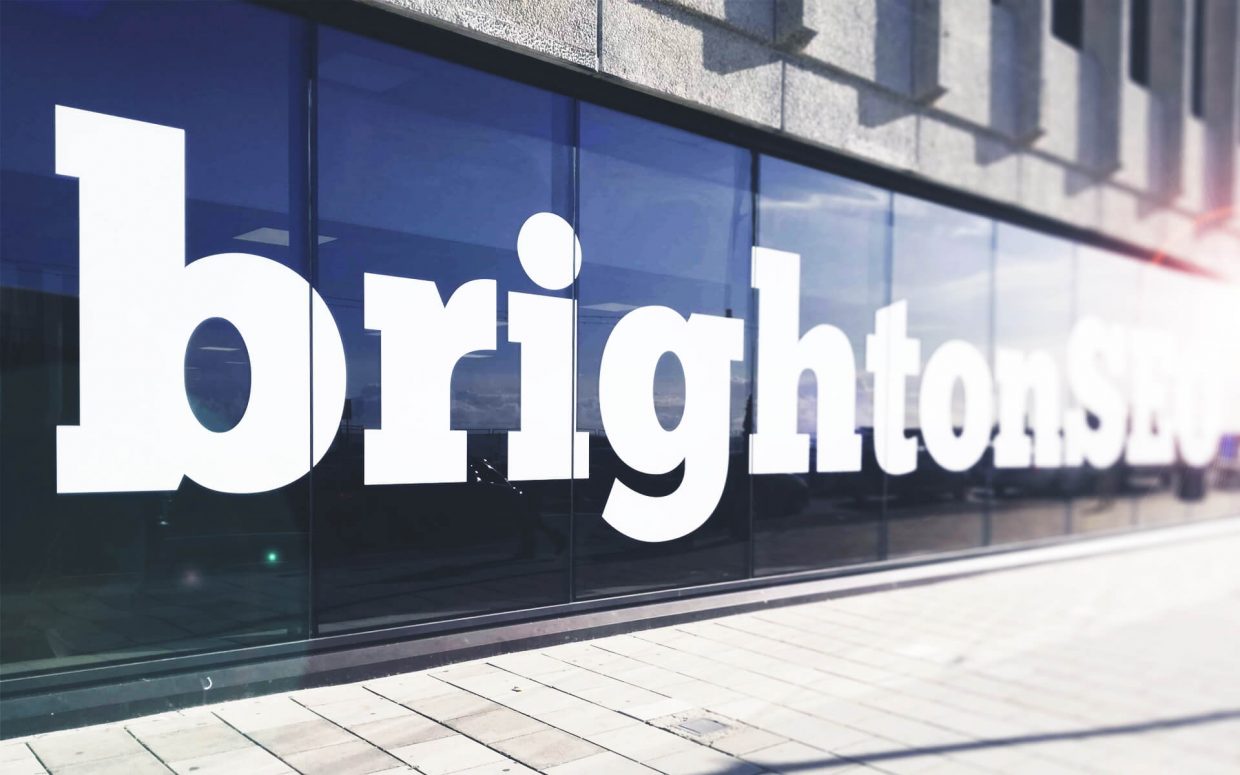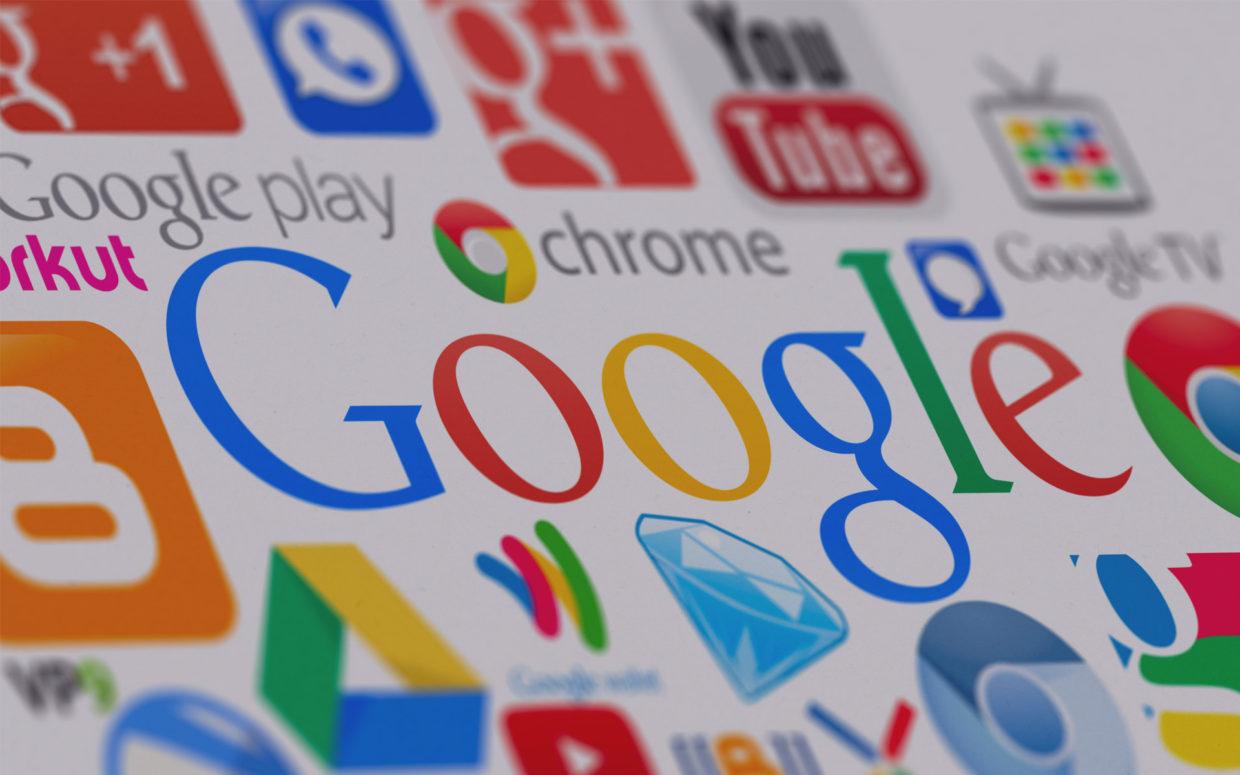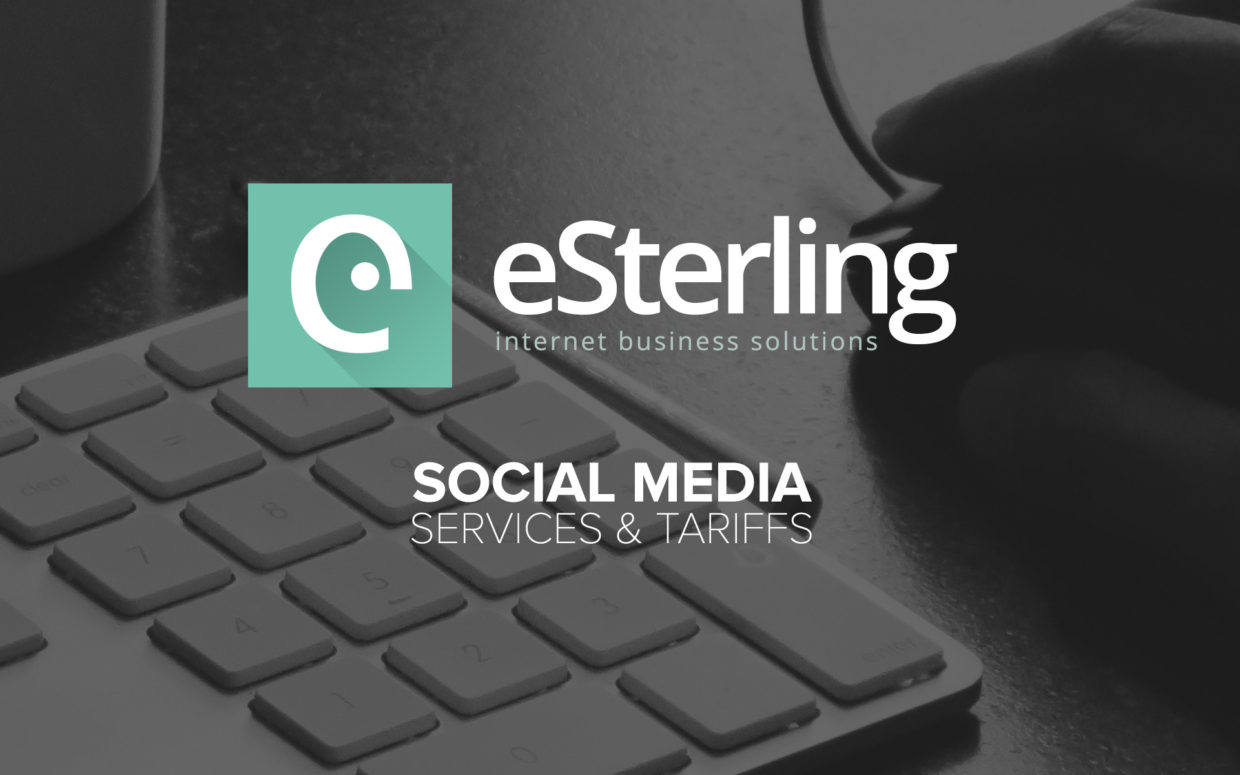My BrightonSEO Experience
So off I popped on the train to Brighton SEO this April, it was my first time attending and I really loved it. It is always nice to mingle with like-minded individuals that work in similar environments and actually share ideas, tips and of course brush up on my networking skills.
So one of the first talks I went to was “8 Ways to Increase your Ecommerce Conversion Rate” I have a long list of clients who our team constantly talk to about ways to improve their conversion rates & thought this would be a useful session.
At the end of the day it doesn’t matter how amazing our SEO team is or how much traffic our clients website gets… if that traffic doesn’t convert into sales then we and our clients are wasting time and money.
Our team could go through so many ways that you could increase your ecommerce conversion rate, but I wanted to focus on a few from the session that I feel are fundamental to even having a shot at increasing conversions.
Personalise your homepage BUT not too personalised
For example, display products related to a user’s previous purchase history or/and displaying the users “Current Cart Contents”
Promote alternative and compatible products on the product pages = Cross Selling
So for example if a user is looking for a pink dress it is best practice that it is visible on the page alternative pink dresses or dresses of a similar style. If I am being honest the amount of times I shop online and end up buying something from the “You May Also Like” options is countless…
My credit card statements are proof!
Using good quality and multiple product images
If I could sing this from the rooftops I would! It goes without saying a good visual is one of the biggest selling factors.
“56% of users interact with product images before any other element on the page”
Ecommerce sites ideally need an image that shows the product in scale so that users can gauge how big the product is without having to search for its sizing and potentially leaving your site and purchasing off a competitors.
Also an image that showcases the products’ features to help sell, if possible a “lifestyle” image and one of any accessories included.
Display user reviews
“95% of users rely on reviews to evaluate a product, so reviews are clearly an extremely important aspect of the buyer journey.”
The problem here is consumers love reading reviews but if it’s too much hassle to leave a review they won’t even if the service/product is the best thing since sliced bread.
Which means you need to make it as easy as possible for a user to leave a review.
- Don’t make users set up an account in order to leave a review. Use emails to authenticate purchases.
- Don’t make users provide unnecessary personal info, again you only need their email and they should be able to leave a review anonymously.
- Finally, don’t forget to remind users to leave a review, send a follow up email and incentives to encourage users, BUT don’t spam it.
Display shipping costs on product and cart pages
“Users hate paying for delivery and 55% of users will abandon checkout due to high delivery costs.”
If you can’t offer free delivery, then you should be as transparent as possible and display the delivery cost at every stage. There is nothing worse than shopping online, adding everything to the cart…going through adding all your personal information, delivery/billing addresses and then right at the final hurdle…getting a postage fee…your put off and then abandon the checkout.
Always offer a guest checkout & simplify your checkout process as much as possible
Things like, minimise forms & automatically applying the shopping address as the billing address…these quick wins all push the user to hit the “PAY NOW” button that little bit faster.
Promote trust using icons, badges and text
“17% of users will abandon their cart because they don’t trust the website with their credit card details.”
So we all should know now…and our SEO team constantly reminds clients the need for an SSL on websites, number 1 rule!
Some other ideas to promote trust would be adding security icons to your checkout pages, such as a padlock icon and using reassuring copy, such as ‘secure card payment’ or ‘checkout securely’.
Get in touch if you’d like to know more about our services and how we can increase your conversion rates and drive more sales for your business.
BrightonSEO 2019 Overview
eSterling recently joined some of the best Digital Marketers at the the UK’s largest search marketing conference, BrightonSEO.
During the huge one-day event, we managed to attend a number of interesting talks encompassing everything from eCommerce SEO, Client Success and even a Q&A with John Mueller from Google. With a host of guest speakers from every corner of the industry, it was impossible to fit everything in but we have recapped our day below.
For the first session we went to a session that covered site speed, something that anyone reading this has probably heard a lot about of the past 18 months. Here we saw some great talks, the first from Rachel Costello from Deepcrawl who spoke about “how we can meet user’s high expectations”.
Secondly we heard from Polly Pospelova on “how to get a 100% lighthouse performance score” again this is something that people will be familiar with. As we have done numerous times I’m sure you’ve all been to Google’s Page speed insights tool and wondered how to get that wonderful score of 100. Here Polly shared the steps and processes used to get the magical 100 out of 100, we’ll definitely be using some of these tips on our sites in the near future.
Finally Chris Simmance talked about “how to trim js, css & external stuff to slim down & speed up your site”. He talked about how we can identify and trim down assets on individual pages that can help us reduce code bloat and improve site speed and performance on a page by page basis. You can view his slides here.
One of our SEO executives attended Search Presence Intelligence – Where Search Meets Business Intelligence by Stephan Bajaio – this was on how SEO can help other departments reach their goals. Stephan gave interesting examples with HR and Product Development.
For Product Development the example was about naming products. Through experience out SEO team will know how to create engaging and keyword rich product titles for more successful SEO campaigns.
This session also included, Why UX (User Experience) is SEO’s best friend by Luke Hay and Michelle Wilding-Baker this talk focused on how beneficial UX is that matches a user’s intent and how that can be determined by looking at search results.
The benefits of pulling together information that can then be used to decide on what elements a page should have, such as having an uncluttered, fast and mobile friendly website, something that we incorporate within all our projects.
The afternoon sessions were about link building and clever ways to get other websites to link back to your website and increase your site authority. The SEO Manager from Screaming Frog talked about ‘linkbait’ and how to create engaging and funny content to attract attention and hyperlinks to your site.
What you need is a good idea, something our SEO team works together with our clients to produce.
The second speaker gave some tips on how to build links for our clients by applying automated and personalised methods. He mentioned some seo analysis and link building tools and provide us with advice on how to utilise them in our link building strategies.
The last one focused on integrating the gamification technique to the SEO strategy. An effective way to build links at a rapid pace by creating and launching a game that everyone would talk about and would love to share.
We then attended a session on Paid Search.
First speaker focused on how algorithms and automation systems can help us get a better idea of the overall ads performance and how to use data to get insights and knowledge that could determine business decisions and strategy.
The second one was about Local PPC. Here we picked up useful tips on how to build your local ppc strategy for location-based companies and make the most of your budget, such as location settings- radius, locations extensions, bidding, and keywords with geo- location.
The last session focused on other advertising platforms such as Facebook, YouTube, or display, they discussed the strengths and weaknesses of each platform and the importance of retargeting.
This is something that is extremely relevant considering the continued increase in users on social media platforms.
For our final session, the focus was on SUCCESS. This talk was about how we can use data to keep our customers happy by Eli Zheleva. The discussion was about how we can better understand our client’s demographics, goals and provide reports that show a true representation of targets.
The core points in relation to our customers’ needs that we picked up from this talk were:
- Revenue is great. Profit is greater!
- Listen to our customers
- Know what our customers think about our service & how we can improve
- Get reviews but not to be scared of negative reviews!
- Keep an eye on competitors
- Focus on ROR
Over the next few weeks we will be putting together more in depth posts covering all of the talks we attended and what tips you can do to improve your website and SEO results.
In the meantime, if you need and help/information about our Digital Marketing services – SEO, PPC and Social Media, get in touch with us!
Is it worth getting a Google 360 Business view?
It seems like a good thing to have, and there’s plenty of companies out there who harp on about its effectiveness and how it improves the search rankings. So here is some information we thought would be useful
What is Google Business View?
Based on Google Street View, Google’s Business View gives users an inside view of your business. The idea is that, instead of just seeing a shop front, warehouse or generic office facade, you can now do a virtual walk in and see what the business looks like on the inside.
The difference from Google Street View is that there is no special Google vehicle doing the photographs. Instead, to get all those 360° images, you must hire a trusted agency (which we are) – it’s not something you can just do yourself.
What benefits?
The web seems to be unanimous in saying that there are benefits to having your business included in Google Business View. Having images of your business displayed right next to search page results should give customers a better sense who you are, and whether you are a real and trusted company.
So, it would be fair to say it will help your click through rate. But will it help your search ranking?
To date, it there doesn’t seem to be much research on this, and Google are pretty “hush hush” about it.
“An article that appeared in Moz.com in 2013 did show that sites that ranked high in local searches and have also adopted Google Business View managed to retain their dominance.”
Which suggests a correlation between having Google Business View and maintaining a Google ranking.
One thing we are fairly sure about, is that Google usually looks after those who use a Google feature. Having a virtual tour may not directly boost rankings, but is will increase trust, which does play a part in the local algorithm.
What can we offer with this Google 360 service?
- High quality 360 degrees walkthrough of your business from a Google Trusted & Verified agent
- Images linked to allow a virtual walk around offering a Virtual reality experience
- Interior & Exterior images
- Improve your Google presence
- Improve traffic to your website
- We will add the feature on your Google Business page, maps and street view
- Can be viewed across all mobile devices
- The codes/306 will be embedded onto your website
- The codes/306 can be embedded onto your social media accounts
- Ideal to show your showrooms/offices/factory/industrial/Warehouses
To discuss this package please contact Wave White on 0121 766 8087
We are now a Google Partner!
Achieving Google Partner status means that eSterling Ltd has demonstrated Adwords expertise; met Adwords spend requirements, and demonstrated sustained revenue growth for our clients, as well as understands best practices.
What does it means when a marketing agency advertises that it is a certified Google Partner?
When you see that badge on agencies website, it tells you a lot about the business.
Google Partner status isn’t just handed out… that badge has to be earned, and we have worked for ours!
Not only must our employees take various courses and pass a few tests to gain individual qualification, eSterling Ltd itself has proven that it can meet Google’s strict requirements to become a partner.
As eSterling is a Google Partner Agency, what are the benefits for our clients?
- Google Partners provide features and tools designed to help us grow your campaigns.
- We are up to date and constantly on the ball, through the certification process, our team is provided with training directly from Google.
- Being certified demonstrates the excellent service we provide to our clients.
- We can demonstrate we work along side Google and that Google trusts us!
What is the impact of Google’s new paid search ad layout on organic search…
Over the years, the Search Engine Result Pages (SERPs) have changed a lot. Features like news, images, videos and the Knowledge Graph have impacted the display, sorting and order of SERPs, dramatically impacting organic listings.
Recently, Google decided that paid search ads will no longer appear on the right-hand side of search results for desktop users and up to 4 paid search results will appear at the top of the page.
Paid search ads that fall below the 4th rank will appear at the bottom of the page, which has limited visibility to end users, for a total of 7 ads per page max.
This is a big change, but how does it really impact organic search?
Like many companies, Google has seen mobile traffic grow at an accelerated pace over the past two years. This new layout makes the desktop experience very similar to the current mobile SERP. It will allow Google to provide more relevant results for end users and also provide better performance for advertisers
The key here is the fact that Google is very good at understanding intent. Google can distinguish a transactional query from an informational query.
How does this impact organic search?
Now that paid search ads are taking up more organic space, click-through rates for organic search listings, especially in the first two positions will probably decrease because the organic results have been pushed farther down the page.
Since the organic search results will be relegated to further down the list, this will cause more advertisers to get more visibility from the top paid search ads, but it comes at a high cost.
If brands really want to get the most out of search, they will need to create an integrated organic and paid search strategy with focus on top rankings and paid ads to maintain visibility and be in front of their target audiences.
With more paid listings appearing you will need to focus paid landing pages towards searchers in the buying/decision-making stages, whereas your organic landing pages should be better positioned (and possibly expanded) to gain visitors in the research/tought stages.
In summary, it will be more important to rank in the first two organic positions to capture the most clicks and visibility from organic search.
Since the organic results are getting pushed further down the page, both paid and SEO must work together to gain the best results.
The SERPs will continue to evolve as Google looks for new and innovative ways to make the desktop experience similar to the current mobile SERP and provide the most relevant results for end users.
Agencies and brands must adapt and put together results-driven strategies and tactics using both paid and organic search together to maximize ROI, capture more conversions and provide end users with relevant content in their moment of need.
The importance of having an SSL
What is an SSL used for?
The primary purpose of an SSL is to keep the information between a website and its users encrypted so only they are able to read it. This is important because when information is transmitted across the internet it passes through many different computers all of which can read and record it.
That means that any computer between you and the website can read credit card details, usernames and passwords. When an SSL is this information becomes unreadable to those computers.
In addition to this encryption an SSL also provides authentication ensuring that a user is sending information to your website and not that belonging to a criminal. Again, because information passes through many computers without an SSL any of these could impersonate your website and trick users into sending their personal details.
Why is an SSL needed on my website?
Ecommerce sites are required to transmit and receive sensitive information including credit card and contact details. Most websites provide administrators with the ability to edit content through a log-in area that requires a username and password to access. In both cases if an SSL is not used that information can be stolen by a third party and be used for criminal means.
Do I need an SSL if I don’t run an ecommerce shop?
There are numerous reasons why an SSL is beneficial even if your website is not ecommerce and does not have a log-in/administration area.
SEO
Google stated in 2015 that they are using the presence of an SSL on a website as a ranking signal. That is, a website with an SSL will rank above a website without all things being equal. Continuing into 2016 Google will place more and more emphasis on an SSL as a factor. Furthermore Google has plans to alter its chrome browser to show websites without an SSL as “insecure” which could serve as scare tactics pushing potential customers to a rival.
Integrity of the content you are serving on your website
Once you secure your website with an SSL certificate a third party cannot alter the content that is going to be received by the end user. Here you can assure your website visitors that the content they are viewing is the same as you are publishing. Without an SSL a third party can alter the content of your website before it is received by adding adverts or more dangerous content such as viruses.
Authentication of the Website and its content
An SSL verifies that you are who you say you are. A website secured by an SSL and verified by certificate authority means your customer can easily recognize that the information is genuine and not from someone else. This is especially important if your website contains content such as technical specifications, health, finance or other information of this nature.
A signal of trust to the user
Web browsers give a visual indicator when a site uses an SSL. While they may not be aware of exactly how it functions users know that the padlock logo that appears on an SSL enabled site is “good”. The use of an SSL tells users of your website that you consider their security and privacy to be important.
For further information please contact Wave White on 0121 766 8087 or email wave.white@esterling.co.uk
Forget Your Testimonials Page, 2016 Is The Year Of Reviews
Let’s face it: Customers aren’t reading your testimonials page. So what can you put in its place?
2015 was an insane year for Local Search — especially in the latter half. We lost the 7-pack, and now the recent Google Plus update has removed all location information from business pages. Until Google rolls out another update to Local, your business listing is effectively your Knowledge Box and your listing on Google Maps. Reviews have always been important, and while they’ve lost a bit of the strength they used to carry in the Local algorithm, they’re still incredibly important to potential customers. Reviews started showing in isolated pop-ups back in 2013, but now that’s the only place you can see them. Now, I’m not going to start spouting off stats about how people trust reviews from strangers or how bad reviews will hurt your business. You’re here on Search Engine Land, so you’re likely already familiar with such information. Now that location info has been pulled from Google Plus, your reviews area is a much bigger piece of the local info pie. There’s no more business description, or photos, or categories, or anything else to distract users — they’ll only see your business name, address and phone number… and your reviews. If you’ve read any of my previous posts here, you know that I typically base my posts on recent conversations with businesses and clients. This time around, I’m jumping back on a soapbox.
Your Testimonials Page Does Nothing For You
Yep. I said it — and it’s true. And yes, I’m sure a lot of you are freaking out right now. For some reason, I’m seeing more and more testimonial pages on sites lately. Yes, reviews are important. And yes, your customers want to read your reviews. But they don’t want to read them on your site. Check your Google Analytics and see for yourself. It’s likely that the only traffic your testimonials page sees is from your own staff. If you’ve got a filter set up to remove your own internal traffic, it’s even easier to see. Customers want to read honest, unbiased reviews on third-party sites. They simply don’t care about (or trust) the reviews on your testimonials page. Still don’t believe me? I’ll prove it to you. If I came to your place of business and had a bad experience, then decided to write a scathing one-star review, would you post that at the top of your testimonials page? Of course not — and people know that. Everyone knows that a testimonials page only lists the best of the best five-star reviews, so they’re not going to read them. They’re checking out your reviews to see if there are any bad reviews… and to see how you respond to the bad reviews. Even if you post every review to your testimonials page (the good and the bad), the general public will always assume that your page only includes awesome reviews. They’ll skip the page just like everyone else.
Instead Of Testimonials, Link To Off-Site Reviews
Since customers will ignore your testimonials, you should instead create a “reviews” page that links to the various websites where customers can read the reviews they’re looking for. You’ll obviously want Google at the top of the list, since Google reviews are the most visible. Make sure to include any vertical directories that customers might frequent, as well. Include some messaging at the top of the page that lets users know that you’d like them to read what past customers have said, just like you’d include on a standard testimonials page. When you list the various links, make sure that you include target=”_blank” so that the links will open in a new browser tab — that way, your customers won’t have to navigate back to your site. Don’t forget that it’s a bad idea to link to your Yelp listing, since that’s discouraged by Yelp. Instead, do a Google search for “[your business] Yelp” and copy the resulting URL. Use the SERP link as your link to Yelp, so people will click the link, see your Yelp listing as the #1 result, and then click on it. Customers still end up on your Yelp page, but Yelp sees the visit as coming from an organic search. Instead of a testimonials page that no one reads, you’ll have a reviews page that customers find incredibly useful. If you pair the page with a postcard that you hand out to customers (like I wrote about back in 2014), it can even help you get more positive reviews from your customers.
Google Become Alphabet in a Huge Restructure
Google Become Alphabet in a Huge Restructure
Recently, Google announced that they would no longer be functioning under the well-known brand, but restructuring as ‘Alphabet’. This will be the overriding holding company, with Google becoming a subsidiary of this.
The whole shake-up has emerged from the top, with Google’s co-founders, Larry Page & Sergey Brin, stating that the entire company will be changing, with big alterations to the structure and management; the biggest change being that Sundar Puchai will now oversee the search engine, Google.
This restructure comes as part of an initiative to give investors chance to see where their money is going and exactly what it’s being spent on. With the huge success of the search engine, it’s clear that Google, or ‘Alphabet’, can play its hand elsewhere.
The new company, Alphabet, will preside over a collection of companies, the largest of which will be Google.
All shares of Google will automatically convert into corresponding shares of Alphabet, which will continue to trade under the stock ticker symbols GOOG and GOOGL. Shares in Google soared 5% in after hours trading. The new structure is said to be similar to Warren Buffett’s Berkshire Hathaway, which wholly owns a number of diverse holdings and has stakes in several others.
It seems that Google will continue to push the main Internet products that the business has to offer, but Alphabet will expand and increase the growing need for other products and business sectors. Statements suggest that the separation of the companies will enable them to independently market items that aren’t entirely related.
It remains to be seen whether Google will simply continue to tell shareholders to be content with their profits when it comes to some major business segments.
Have you thought of obtaining the new .UK domain name?
You may have heard recently about the launch of the new UK DOMAIN SUFFIX .uk from the UK Domain Registrar NOMINET.
You may feel you wish to secure it for your company to match your current domain name(s)?
If you did, it would ensure that no other company could try to seek advantage of your company’s internet credibility, by replicating a website on your domain name(s). We feel that all of our clients would benefit from securing them.
We are currently offering a special concessionary rate and this domain name can then be directed to your main website.
For more information, please contact Wave White, our Customer Relationship Manager on 0121 7668087 or alternatively email wave.white@esterling.co.uk
Social Media – Services & Tariffs
Take a look at our new Social Media Packages that have been designed to work along side your current SEO Campaign.
A Social Media Package with us will enhance you websites presence across the internet as well as providing you with a source of Social Media content for your business.
For further information click here to view our Social Media offerings alternatively do not hesitate to contact our team on 0121 7668087 or email us on helpdesk@esterling.co.uk










